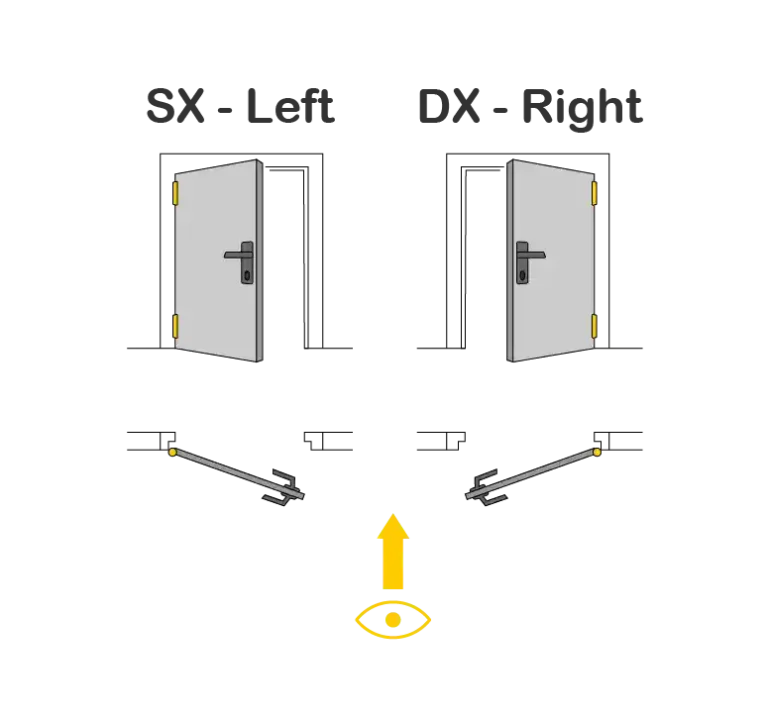FAQ – for fire rated glazed doors, windows and complex systems
Whether you’re looking to write a correct prescription text, better understand the offers you are receiving or simply learn more about windows and doors, no matter the complexity of the project our glossary is here to help. In the following paragraphs all the parts of doors and windows are broken down to better illustrate the terminology and how all the parts and pieces come together. Understanding the basic components makes it easier to talk with contractors and dealers and helps choosing the right product.
A door (or window) basically consists of two parts: the frame which is mounted to the wall and the leaf which is the movable part within it.
Subframes consist of steel profiles that surround the interior edge of the wall opening and which assure that the nominal (theoretical, desired) dimension of the opening is equal to the true dimension and that all angles are at perfect 90 degrees. Also, thus unwanted gaps between door frame and wall are avoided or kept to a minimum. An alternative term to subframe is “casing”. Subframes can be installed as shown in the picture during the construction of the wall, or inserted into an existing wall.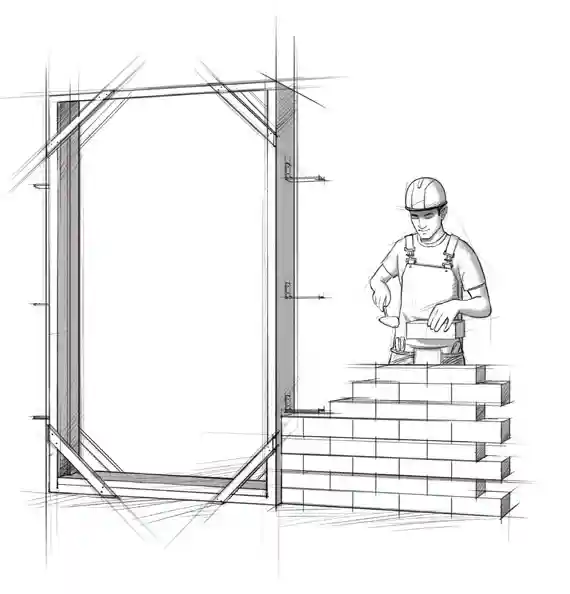
The covering over a door jamb giving the finished look to the door. The trim conceals the gap between the jamb and the wall. In case of “P” or “Z” profile, the trim is a part of the frame.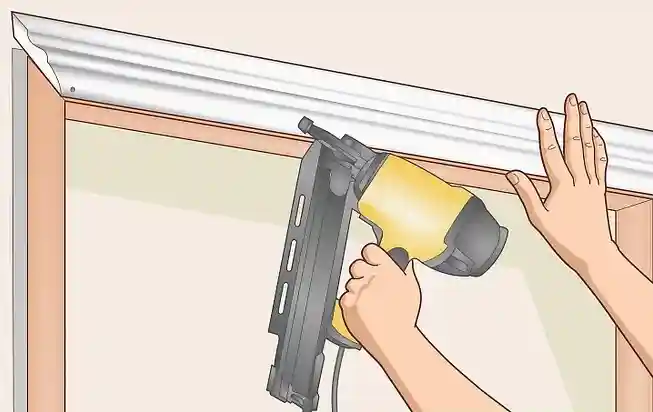
The surrounding profile to which a door / openable window is hinged to create a door / window set. It is also the part of the door set which is installed into a wall. The door jamb is a specific part of the door frame which is comprised of several parts, including the door jambs (left and right), the head jamb and the optional threshold.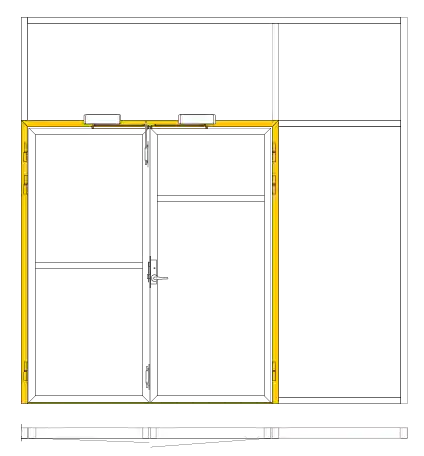
The head jamb is the top horizontal piece of the door frame whereas the two side jambs make up the vertical components.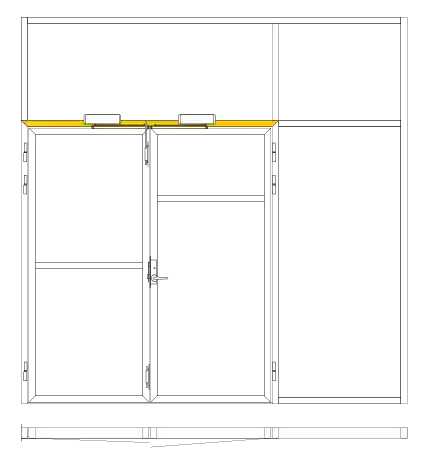
The vertical frame that sits opposite to the hinges and holds the strike into which the lock closes. An alternative term to lock jamb is “lock upright”.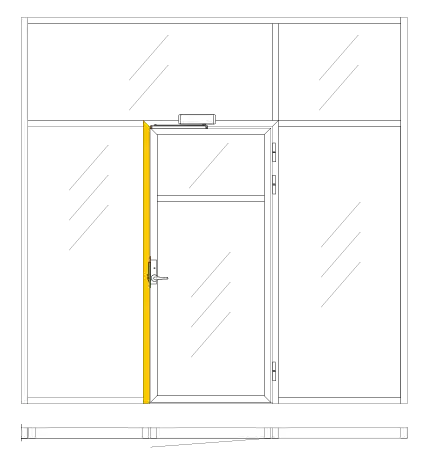
The vertical frame that sits opposite to the strike and onto which the hinges are attached to. An alternative term to lock jamb is “hinge upright”.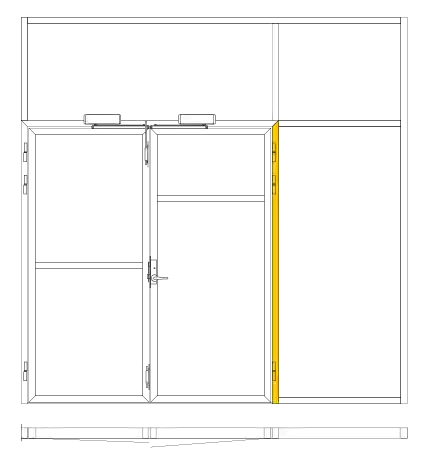
The optional bottom piece of the door frame. Usually made from aluminum. Can be fixed to the frame or directly to the floor. Alternative terms to threshold are “sill” and “bottom jamb”.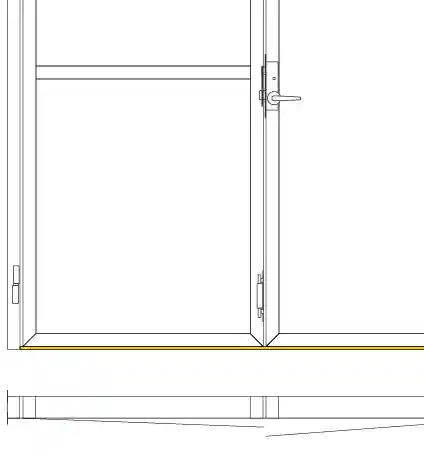
Mullions are profiles which hide the seams between the glazed / flush panes within a door / window, separating a single element into 2 or more panes. The same term also applies to the profile between door frames and optional side lights and / or top lights. Mullions may be used simply for esthetic reasons or also for more practical reasons when the dimension of a single pane is superior to the technically feasible dimension (limited by a certificate, transport limits or installation issues) and the single pane thus needs to be divided into smaller multiple panes.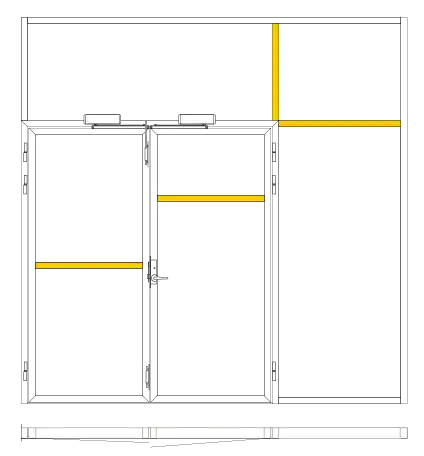
The leaf is the moveable part of a door / window. It is made up of the vertical stiles and horizontal rails which hold the panels. An alternative term to leaf is “sash”.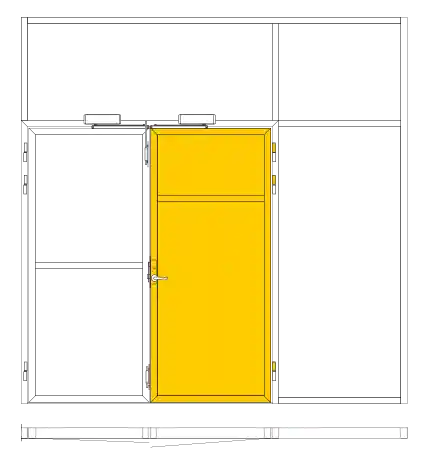
The active leaf is the leaf that typically is operated and which holds the lock in double leaf systems. It is called active because in order to pass the door / open the window, one needs to move at least the active leaf.
The other leaf in double leaf systems (see also active leaf). It is called passive because one needs not necessarily to move it in order to pass the door / open the window. The passive leaf holds the counterstrike into which the lock fixed on the active leaf closes. Typically, in fire doors the passive leaf in addition to the strike also holds the counter-lock with a flush-bolt mechanism which locks the door leaf firmly to the head jamb in order to withstand the higher air pressures in case of fire.
A slab is just the basic, flat door / window part which is yet without glazed or flush panes, hardware, hinges or frames.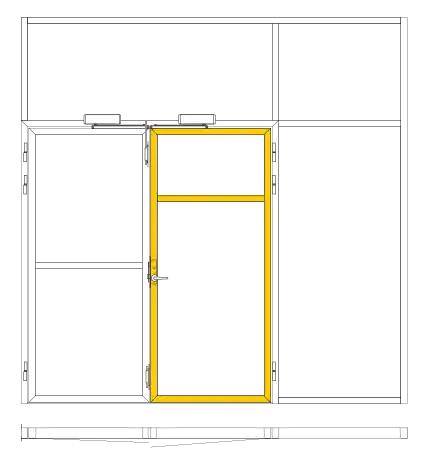
Rails are the horizontal components of the door leaf whereas stiles form the vertical pieces or edges of it. These and the rails form the frame of the door slab.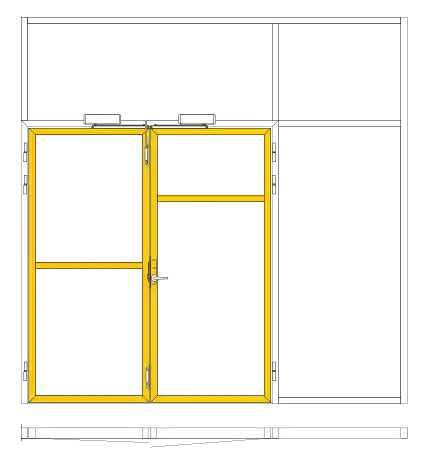
The topmost horizontal rail of the door, which touches the head jamb.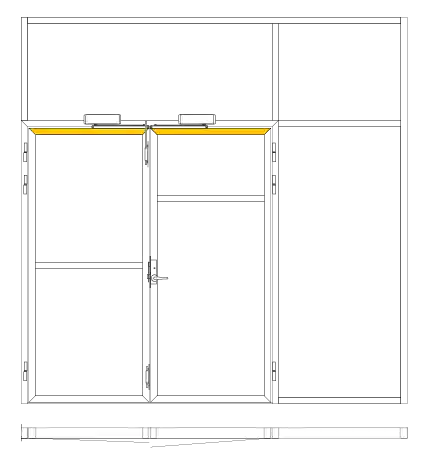
The bottommost horizontal rail of the door which touches the optional threshold.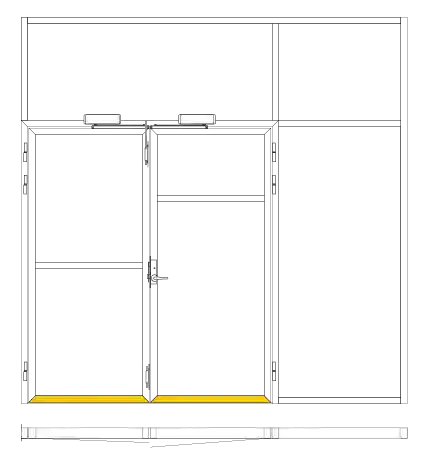
The optional horizontal rail which is located within a door at the height of the lock separating the door element into 2 or more panes. Usually not necesserily required but may be applied for esthetic reasons or to shield the open side of a push bar or to offer protection to the glass in heavy duty uses (in a warehouse for example where trolleys may be pushed against a glazed door to open it).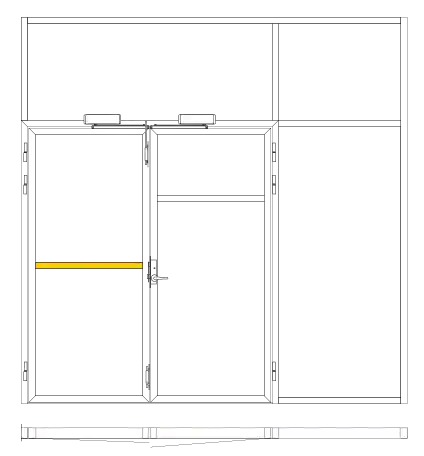
It is an additional horizontal rail located within a door leaf below the top rail but at a different height to the also optional middle rail. The term applies typically to wooden doors as cross rails are very seldom used for esthetic reasons in profile doors.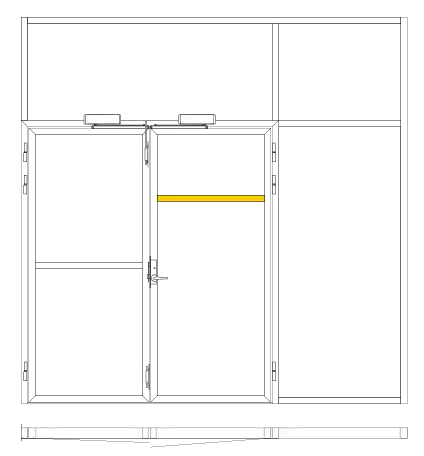
The vertical edge piece that sits opposite to the hinges and holds the lock.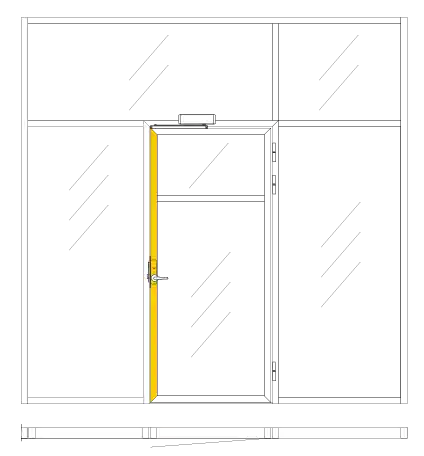
The vertical edge piece that sits opposite to the lock and onto which the hinges are attached to.
The glazed or flush parts of the door element which are sunk below the level of the rest of the door leaf to create depth. The panels are surrounded by profiles (mullions) to hold them in place and cover the seams between them.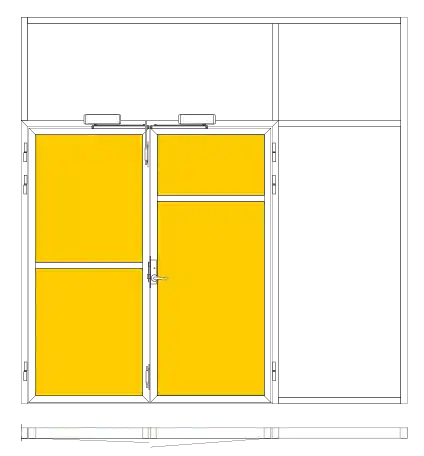
The core is the innermost layer or center section in component construction of the door. In profile systems only flush panels feature cores. An alternative term to core is “infill”.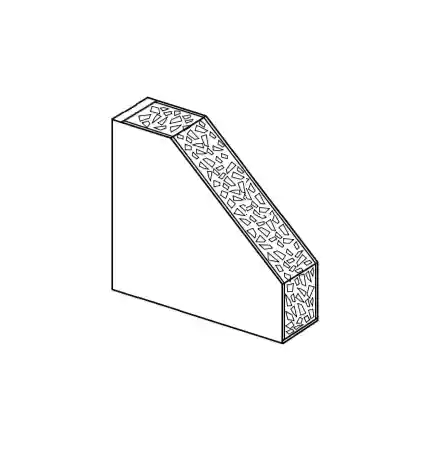
Flush panels are a type of non-transparent panel either in steel or aluminum in profile systems.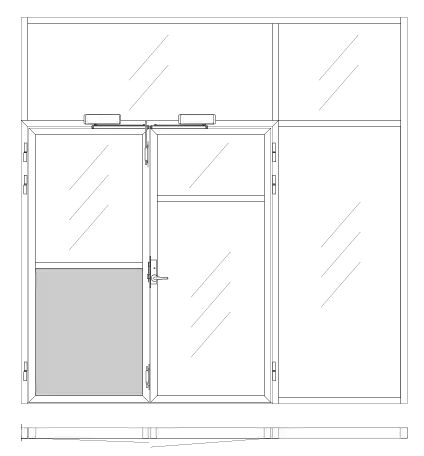
The astragal is the profile that covers the seam between the leaves in double leave elements. In profile systems the astragal is a part of the vertical profile of the active leave and is flush with the rest of the profile. Thus, the term “astragal rebate” is probably more appropriate as it is not a separate part itself but the rebate of the lock stile of the active leaf.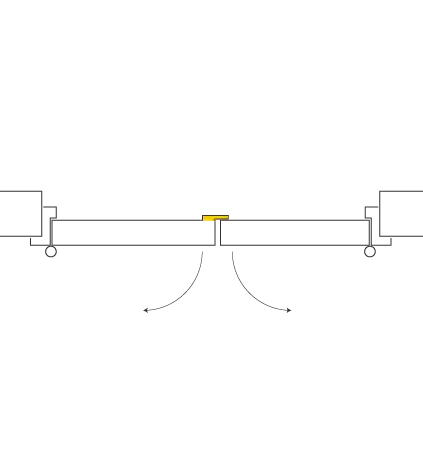
It is the weatherstripping attached to the bottom of the door leaf that prevents infiltration beneath the door. Door sweeps can be fixed or moving in which later case they are also called “automatic”. They move into position closing the gap beneath the door as the door closes and its mechanism is actived by the door leaf moving towards the door jamb thus pushing the weatherstripping down.
The term locksets stands for all of the mechanisms that keep a door shut and secured for example lock, flush bolt, etc…
A type of door handle that includes a lever to push down upon to open the door. The lever primarily moves the latch of the lock. Most doors come default with a lever handle.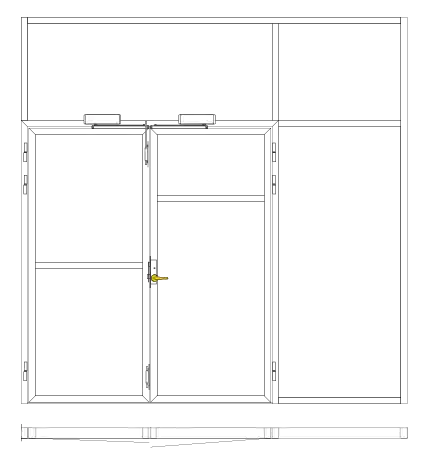
Escutcheons are ornamental plates surrounding handles, thumb turns and key cylinders. They’re designed to protect the surface of the door panels from nicks and scratches. They come in various forms and materials (round, oval, square, long, ornamental, steel, inox, alluminum). An alternative term for escutcheon is “rosetta” which refers to round or oval escutcheons typically.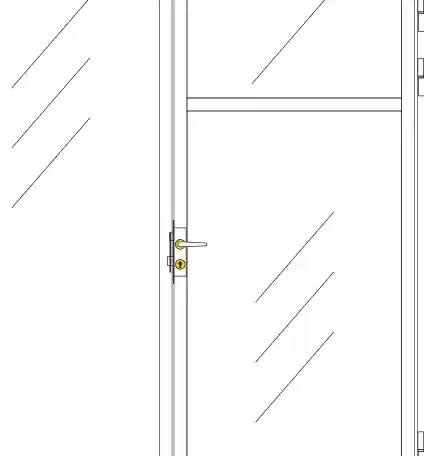
A lock type that requires a pocket to be milled into the door / profile for it to sit inside the leaf and which is visible only when the leaf is open. Most modern quality doors come with mortise locks.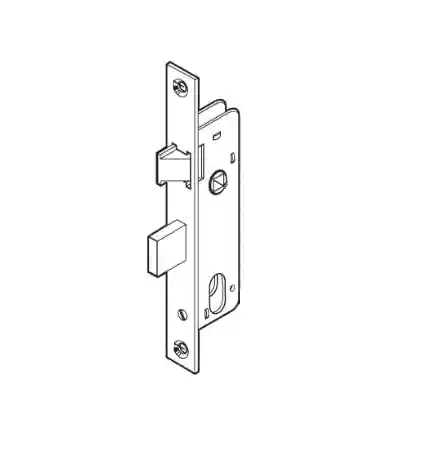
The latch is retracted by the handle and extends from the leaf into the frame and holds it closed. It is the part of the lock which engages the strike with a beveled, spring- operated bolt when the leaf closes into its frame. The latch ensures the leaf stays closed even if it is not locked. An alternative term for latch is “spring bolt”.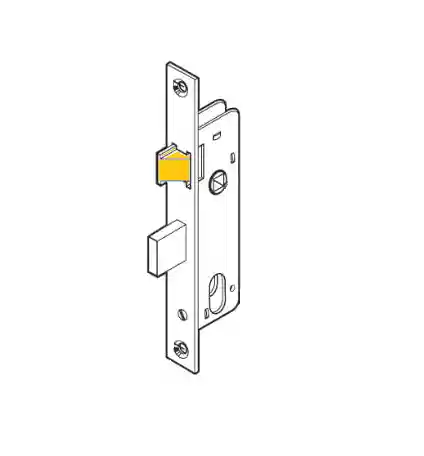
The square “dead” bolt is heavier and thicker than the latch and is usually the lower bolt on the lock located below the beveled latch (except for Scandinavian countries, where it is the other way around). The dead bolt is operated by the cylinder and requires manual locking for it to engage with the strike. There are dead bolts which allow 1, 2 or sometimes even 3 full turns of the cylinder with increasing overall security to the door. Dead bolt locks are considered to be secure locks that are difficult to open without a key, especially when compared to a spring bolt locks. While spring latches can be pushed back manually, deadbolts can’t which is why they’re called deadbolts; they’re dead, or unmovable.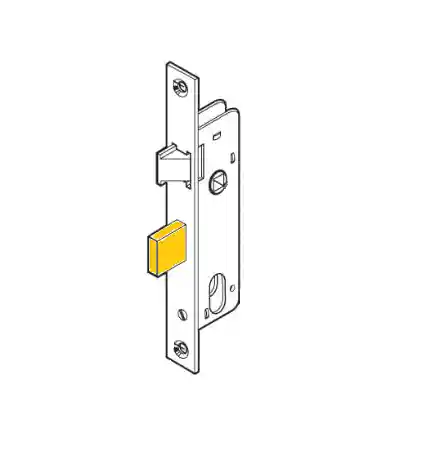
A multi-point lock system is controlled by levers (bolts) in multiple places in the door leaf and frame. It is applied for protection against high-pressure winds, explosions as well as added security for the entryway.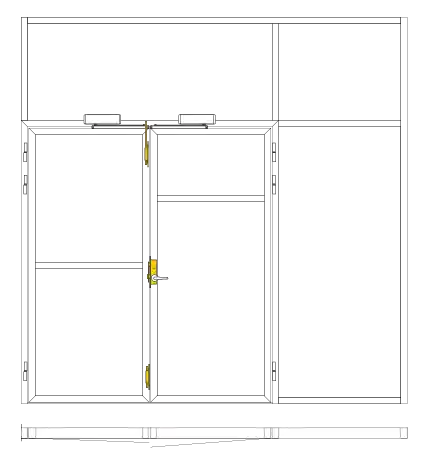
The strike or strike plate is a metal plate attached and flush with the lock jamb that will receive the latch and bolt of the lock or the flush bolt in case of double leaf systems.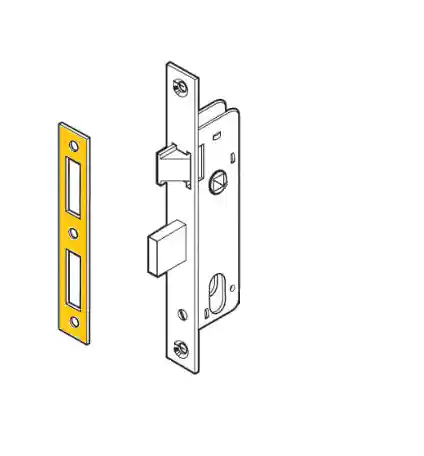
It is a bolt used on the passive leaf to keep it stationary and firmly closed to the head jamb. It is flush with the edge of the leaf when retracted.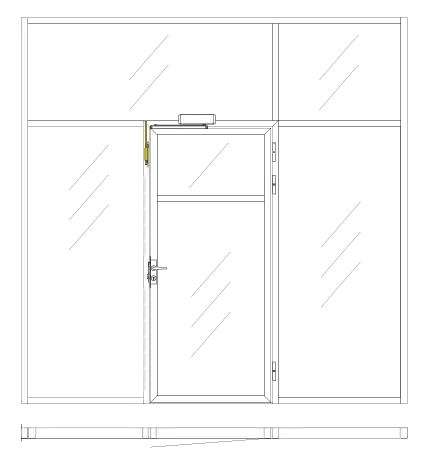
It is the joint mechanism that holds the leaf of the door and allows it to swing freely. One part of the hinge is attached to the leaf which rotates relative to the other part of the hinge which is attached to the door jamb.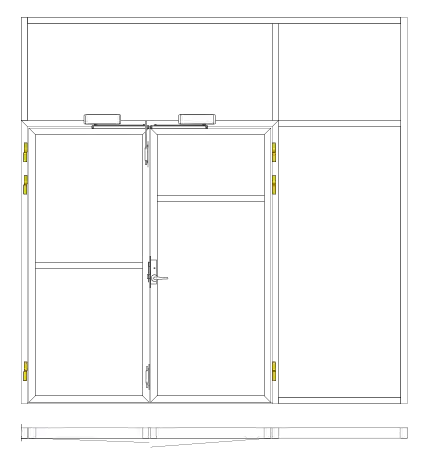
A narrow rubber gasket that is flexible which surrounds the frame or leaf and protects from moisture, sound and air coming in when the leaf is closed and dampens the impact of the leaf into the jamb during closing. An alternative term to rubber gasket is “weather strip”.
A door closer is a surface mounted, mechanical device fitted to the head of a door that closes a door in a controlled manner. It helps prevent the door from standing open, slamming closed, or pulling open due to higher pressure on the push side of the leaf. Door closers are available typically in either a slide arm or scissor arm configuration. When manually opening the leaf, the hydraulic device inside the door closer’s body compresses a spring, air or oil and this energy is then released to the arm which closes the leaf. The closing speed can be adjusted to fit the weight of the leaf.
A coordinator system is a mechanical device installed on double leaf systems only, ensuring that the active leaf closes before the passive leaf so the door can close and latch properly. The coordinator holds the active leaf open while the inactive leaf is allowed to close first. Once the inactive leaf is closed, the active door is released by the coordinator and allowed to close also. This device is necessary to control the closing sequence when both leaves are furnished with latching hardware and/or astragals or the leaves are rebated and or exit devices are installed and one leaf latches into the other. Therefore, when the passive leaf is fitted with a manual flush bolt and no door closer is installed on the inactive leaf, the coordinator serves no purpose since the inactive leaf is required to be closed and latched manually by a person. The door coordinator is mainly for the service of fire rated doors which are typically fitted with rebated door leaves (or astragals), door closers, automatic flush bolts and often come with exit devices such as panic bars. In most European countries double leaf fire doors come with a door leaf coordinator systems integrated directly into the door closers. An alternative term to door leaf coordinator is “closing regulator”. See here a video of how it works in pratice.
A rebate is a characteristic offset (lip) at the edge of doors or windows which causes the leaf to cover part of the frame when it is closed. This lip covers the gap between the door leaf and the door frame and allows the profiles to interlock. The design of a rebated profile removes any draughts that may occur from a standard non rebated door / window set. In fire rated doors, rebates are especially helpful as they help to cover the gap between the leaf and frame which forms because of heat expansion and general deformation.
The side panel on either side of the door / window, filled with glass or flush panels increases the door / window in width and / or lets in additional light.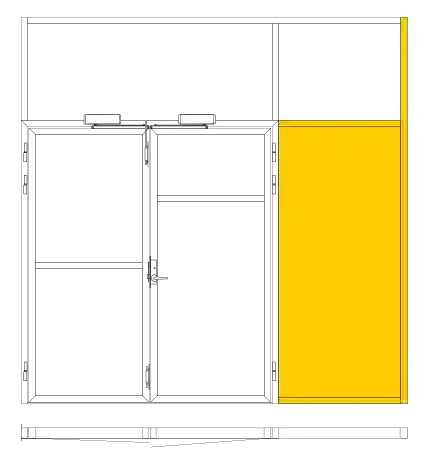
A mounted piece above the door / window, filled with glass or flush panels increases the door / window in height and / or lets in additional light. An alternative term to top light is “transom”.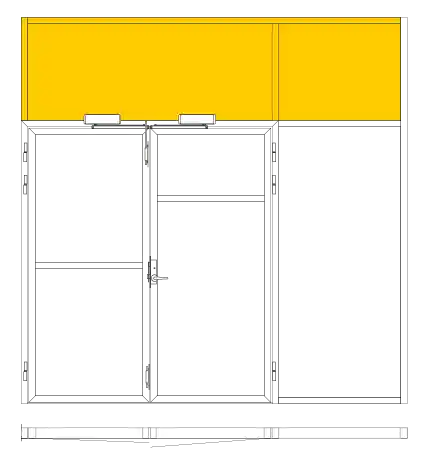
A Declaration of Performance (DoP) describes the construction product’s technical characteristics, such as for example the fire resistance class. The manufacturer must legally issue a Declaration of Performance (DoP) before placing a product into the market which is covered by an EU harmonized technical standard (hEN) or a European Technical Assesment (ETA). With the DoP the manufacturer declares the values regarding the essential characteristics which a product satisfies and takes full responsibility for it. The declaration of performance is valid for the full life of the product.
Most European door manufacturers use the German industry standard DIN 107 which defines the opening sense of a door. To determine the opening sense you need to position yourself on the side of the door from which you can see the hinges. If the hinges are concealed, it is the side from which you would pull the door leaf to open it. A door is then opening right if the hinges are installed on the right side (DX) of the door and if you would use your right arm to pull it open.
If the hinges are installed on the left, and you would use your left arm to open the door by pulling it, then the door is left opening or left handed (SX). In addition to the opening sense, you will also need to specify whether the door opens into or out of the room you are in or in front of. Normally, doors open from a traffic area such as a hallway into the living space. When stating wheter the door opens “into” or “out from” a room you will need to add the position of the observer. Are you in the room or are you in front of the room and from there you can describe the door.